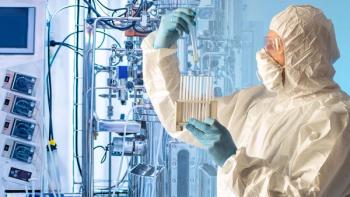
- BioPharm International-03-01-2012
- Volume 25
- Issue 3
CMOs Face a Kodak Moment
The evolving bio/pharmaceutical business model poses risk for CMOs.
Two fundamental cornerstones of the new bio/pharmaceutical business model are the end of the blockbuster product and the need to accumulate and conserve cash. These two realities have major implications for bio/pharmaceutical manufacturing strategies and technologies and create new challenges for CMOs.
Jim Miller
It is widely understood and accepted that the new products coming out of the bio/pharmaceutical pipeline will be sold in smaller volumes than the products introduced a generation ago (albeit at higher prices). This situation partly reflects the failure of bio/pharmaceutical R&D laboratories to come up with safe and effective drugs suitable for broad populations. More importantly, it also reflects the growing understanding of how drug effectiveness varies within patient groups, the ability to develop biomarkers to identify patients for whom new drugs will work best, and the expectation of regulatory authorities that new drugs will incorporate that knowledge into clinical regimens. The classic example is Roche's/Genentech's Herceptin (trastuzumab), which is highly effectively for the 20% or so of breast-cancer patients that test positive for expressing the HER-2 gene.
The need to accumulate and conserve cash is driven by the imperative that bio/pharmaceutical companies in-license or acquire new development candidates and marketed products rather than depend solely on their in-house R&D operations. One prime target for improving cash position is inventories. Bio/pharmaceutical companies have traditionally held two to four times as much inventory relative to sales as have consumer-products companies. Turning inventories more frequently can release hundreds of millions of dollars in cash for the large bio/pharmaceutical companies.
SMALL, FREQUENT BATCHES
The implication of these two realities— smaller volumes and faster inventory turns—is that bio/pharmaceutical companies must manufacture smaller batches more frequently than they have traditionally. This new manufacturing imperative is triggering major changes in manufacturing practices, strategies, and technology. For instance, the CEO of GlaxoSmithKline (GSK) recently talked about how GSK is shortening its supply chain (thereby reducing inventory requirements) by moving manufacturing closer to where the products are being sold rather than concentrating production in very large scale but distant manufacturing sites.
The new manufacturing paradigm will require facilities that are simultaneously smaller scale, more flexible, and lower cost and will mandate major changes in the design of facilities and equipment. Most of today's bio/pharmaceutical manufacturing facilities were designed 20 or more years ago to accommodate large-scale batch processing operations with separate suites each housing individual pieces of process equipment and complex material flows. Those facilities have very high fixed costs, and equipment often sits unutilized and requires long set-up times.
Pharmaceutical equipment manufacturers and companies that develop advanced manufacturing technologies have been responding to the new manufacturing requirements for some time. The major advances already being used include:
- Higher-yielding expression and fermentation technologies that reduce the scale of biomanufacturing facilities
- Manufacturing equipment for both API and dose manufacturing that incorporate disposable parts for components that come into contact with the product
- Microreactors for small-molecule API manufacture, which replace large-scale batch processes with continuous processes conducted in a single, small piece of equipment
- Continuous process finishing and dose manufacturing technologies, such as spray drying and equipment that can blend materials and extrude finished tablets
- FDA-endorsed methodologies, such as process analytical technology (PAT) and quality-by-design.
Some of these technologies and practices are not yet in widespread use or fully developed for commercial operation, but they are clearly making their way into the mainstream. For instance, Lonza announced in early February 2012 that it will build a "factory of the future" based on microreactor and continuous flow technology. Major bio/pharmaceutical companies are working with equipment suppliers and engineers to develop proprietary highly-automated and continuous manufacturing systems for their "factories of the future."
CHALLENGE FOR CMOS
The changing bio/pharmaceutical manufacturing requirements and technologies present a major challenge to CMOs. Much of the manufacturing capacity of the dose CMO industry is compromised of legacy facilities acquired in the past 10 years from global bio/pharmaceutical companies and embodies the large-scale, inflexible, and high-cost batch manufacturing processes that were dominant 20 years ago. As the manufacturing needs of the bio/pharmaceutical industry evolve in the next 5–10 years, CMOs risk being left behind with underutilized facilities that are unsuited for their potential clients' needs.
Only a few CMOs can be considered innovators in manufacturing technology and practice despite the fact that manufacturing is only the thing they do. To a large degree, the CMO business forces them to focus on their clients' current and near-term needs. CMOs deal with a lot of older products and even with new products, their bio/pharmaceutical company clients are unwilling to take on the risk of new manufacturing technologies unless they absolutely have to. CMO profit margins generally do not allow much room for investment in innovation, and most innovative technologies housed at CMOs have been developed and paid for by their clients.
Unless CMOs become more forward-looking about their technology choices and investments, they risk losing out to new entrants and potential clients. The new technologies will often require less investment in facilities and utilities. Because they are smaller and more self-contained, more companies will be tempted to build their own facilities. Because they will operate more-or-less continuously and be highly automated, they will produce drugs less expensively than the older technologies.
Today, the competitive challenges that CMOs seem most focused on are how to differentiate themselves from their many North American and European competitors while keeping a wary eye on producers in emerging markets. By not appreciating the changing manufacturing requirements of their clients and the related new technologies, they risk being made obsolete.
This scenario bears a strong resemblance to what happened to Kodak, which recently filed for bankruptcy protection in the US. Because it was focused on preserving its cash cow—the film and photo processing business—the company viewed its primary competitive threats as coming from Fujifilm and other low-cost film manufacturers. As a result, it overlooked the emergence of digital photography, the new technology that ultimately undermined the company. CMOs could now be facing their Kodak moment.
Jim Miller is president of PharmSource Information Services, Inc., and publisher of Bio/Pharmaceutical Outsourcing Report, tel. 703.383.4903,
Articles in this issue
almost 14 years ago
BioPharm International, March 2012 Issue (PDF)almost 14 years ago
Recombinant Albumin Facilitates Formulation Design of Stable Drug Productsalmost 14 years ago
Biosimilar Developers Face a Reference-Product Dilemmaalmost 14 years ago
Communications Advances Present Challenges to Manufacturersalmost 14 years ago
The Drive for Best Practice in Biopharmaceutical Manufacturingalmost 14 years ago
FDA Guides the Way to Biosimilars in the USalmost 14 years ago
Assessing Filling Technologies For Contamination Riskalmost 14 years ago
Putting Risk-Based Decision-Making Where It BelongsNewsletter
Stay at the forefront of biopharmaceutical innovation—subscribe to BioPharm International for expert insights on drug development, manufacturing, compliance, and more.




